What to Expect at an Arbitration Hearing for a Personal Injury Case
Despite arbitration hearings being perceived as less stressful than court trials, meticulous preparation is crucial for success.

This article explores the various components involved in an arbitration hearing for a personal injury case. It provides an in-depth understanding of the process, participants' roles, and key strategies for effective case presentation.
It further discusses post-hearing procedures and essential takeaways to equip readers with comprehensive knowledge about the arbitration process in personal injury cases.
Key Takeaways
- Negotiate a fair settlement before considering arbitration
- Prepare and organize all relevant evidence for the arbitration hearing
- Understand the rules of evidence for arbitration proceedings
- Present a clear and concise case to the arbitrator, including personal examples and tangible evidence
Understanding the Arbitration Process

Understanding the arbitration process for a personal injury case involves several critical steps. These include negotiating a fair settlement before considering arbitration, assessing the risks of demanding arbitration, consulting with an attorney, and preparing relevant evidence for the hearing.
It is essential to debunk common misconceptions about arbitration, such as the perception that it is an arduous and complicated process. In fact, one of the benefits of arbitration is its simplicity and cost-effectiveness when compared to traditional court proceedings. It is less formal, and the rules of evidence are usually less strict.
Furthermore, arbitration often leads to a quicker resolution, allowing parties to avoid protracted litigation. Therefore, understanding this process is crucial for individuals involved in a personal injury case.
Preparing for the Arbitration Hearing

Preparation for such proceedings entails the establishment of dates, exchange of relevant evidence, disclosure of witnesses, and submission of an arbitration statement. A well-structured strategy is crucial for preparing the arbitration hearing. This includes meticulously assembling a compelling set of evidence, ensuring the availability and readiness of witnesses, and formulating a persuasive arbitration statement.
The following table outlines the key steps:
| Step | Description |
|---|---|
| 1 | Establishment of hearing dates |
| 2 | Exchange of Evidence |
| 3 | Disclosure of witnesses |
| 4 | Submission of arbitration statement |
| 5 | Formulation of strategy |
Every step is vital and contributes to the overall preparation. The ultimate goal is to present a solid case that clearly articulates the claimant's position and supports it with concrete evidence and testimonies.
The Importance of an Arbitration Statement

In the realm of dispute resolution, the arbitration statement serves a critical role, providing a comprehensive overview of the facts, the claimant's position, and the desired outcome. The importance of thorough preparation cannot be overstressed; a well-constructed statement can influence the arbitrator's perception of the case.
It should be detail-oriented, clear, and concise, drawing directly from the evidence gathered. Moreover, the benefits of seeking legal guidance in preparing the statement are manifold. Legal professionals bring expertise and experience, understanding the nuances of what to include and how to present it compellingly.
They can help ensure that the statement is comprehensive, persuasive, and adheres to the procedural guidelines, thereby increasing the likelihood of a favourable outcome.
The Role of High-Low Agreements

High-low agreements serve a significant role in dispute resolution, providing a safety net for both parties by establishing minimum and maximum limits for the potential settlement amount. These agreements offer numerous benefits including the reduction of risk and uncertainty inherent in arbitration. However, they come with specific limitations like potential undervaluing of claims and the possibility of limiting maximum recovery.
| High-Low Agreement | Benefits | Limitations |
| Minimum Settlement Limit | Guarantees a minimum recovery amount | May lead to undervaluing of claims |
| Maximum Settlement Limit | Caps potential payout by the defendant | Can limit the claimant's maximum recovery |
| Reduction of Risk | Provides certainty in uncertain arbitration outcomes | The high-low parameters must be carefully negotiated |
It is crucial to understand these aspects when considering a high-low agreement as part of the dispute resolution process.
Participants in Arbitration Hearings

Participants in the arbitration process typically include the claimant, a representative from the insurance company, an attorney, and the arbitrator, whose role is to objectively assess the evidence presented and make a final decision. Witnesses also play a crucial role in the arbitration process. They provide key information that could be instrumental in the decision-making process.
1. Responsibilities of the arbitrator: The arbitrator is tasked with assessing evidence, considering testimonies, and making a final, binding decision.
2. Role of witnesses: Witnesses present information, often in the form of a testimony, which can substantiate the claims made by either party.
3. Attorney's role: The attorney presents the case of the claimant or the insurance company, ensuring their arguments are persuasive and substantiated by evidence.
These roles are foundational to the process and outcome of the arbitration hearing.
The Structure of Arbitration Hearings
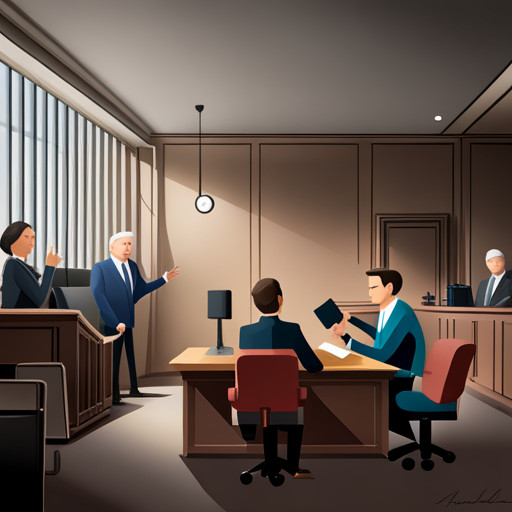
Transitioning from the identification of arbitration hearing participants, attention is now shifted to the structure of these hearings. Crucial to the successful navigation of the process are strategic preparation and effective communication. Preparation strategies encompass the organization of evidence and witnesses, coupled with an understanding of the hearing's timeline and structure. Effective communication, on the other hand, involves clear articulation of facts, arguments, and desired outcomes.
The table below provides a succinct overview of the arbitration hearing structure:
| Stage | Description | Relevance |
| Pre-hearing | Preparation of evidence, witness lists, and arbitration statements | Sets the foundation for the arbitration |
| Hearing | Presentation of cases and evidence | Pivotal stage for argument articulation |
| Post-hearing | Submission of any additional documents and await the arbitrator's decision | Concludes the arbitration process |
Adherence to Arbitration Rules of Evidence

Understanding and adhering to the rules of evidence in arbitration proceedings is a crucial factor in presenting a well-structured and impactful argument. The following points highlight the importance of understanding admissible evidence and evaluating hearsay evidence in such proceedings:
1. Admissible evidence includes documents, witness testimonies, and other forms of physical evidence. It is essential to identify and gather all admissible evidence that supports the case.
2. Hearsay evidence, though often discounted due to its indirect nature, can be admissible in arbitration. Therefore, evaluating the potential impact of such evidence is of considerable importance.
3. Presenting evidence in a structured, organized manner is vital. This aids in creating a coherent narrative and establishing credibility during the proceedings.
Tips to Handle the Arbitration Hearing

Effective management of the adjudicative process requires thorough preparation. This includes gathering and organizing evidence, coordinating witness appearances, and practicing the presentation.
The key to building confidence lies in a solid understanding of the case details and familiarity with evidentiary materials. This understanding also aids in managing emotions during the hearing, by fostering a sense of control and preparedness.
It is crucial to rehearse the presentation of the case in a clear and concise manner. This can help to ensure that all key points are addressed during the hearing.
Additionally, the exchange of evidence and disclosure of witnesses should be executed in a timely and organized fashion.
Proper preparation can provide a significant advantage in the arbitration process, enhancing the likelihood of a favorable outcome.
The Art of Speaking at the Arbitration Hearing
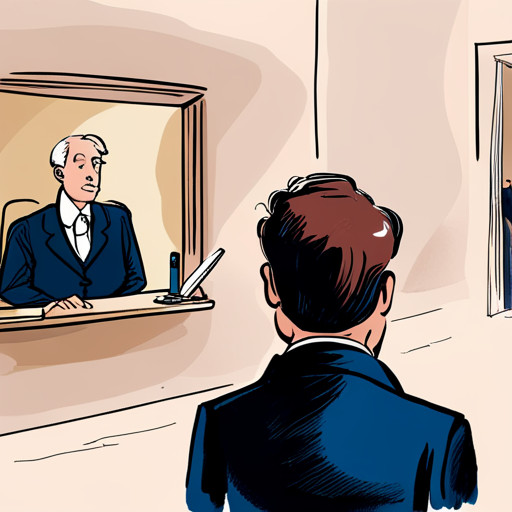
Mastering the art of delivering a concise, compelling statement during the adjudicative process hinges on meticulous preparation, clear communication, and strategic use of evidence to support the argument. It is essential to anticipate potential strategies of the opposition and prepare responses that effectively counter these tactics.
Effective communication strategies include:
1. Clearly outlining the facts of the case and the desired outcome
2. Using evidence to corroborate the narrative
3. Addressing potential counter-arguments to bolster the credibility of the claim.
Handling opposition requires careful listening, note-taking, and calm, respectful responses. A successful hearing presentation not only communicates the facts effectively but also engages the arbitrator with a compelling narrative, underpinned by careful preparation and a solid grasp of the evidence.
How to Present Your Case to the Arbitrator

Presenting a compelling argument to the adjudicator necessitates a detailed introduction, thorough evidence presentation, and strategic use of personal experiences to convey the impact of the incident.
When presenting evidence, it is crucial to be organized, clear, and detail-oriented. Introducing evidentiary materials such as medical treatment records and accident reports can substantiate claims. Moreover, it is beneficial to provide copies of relevant documents to the arbitrator during the discussion.
Building credibility also plays an instrumental role in this process. By offering specific details about the accident and subsequent actions taken, credibility can be fortified.
In addition, articulating personal experiences can make the pain and suffering tangible to the arbitrator, thereby strengthening the case.
Dealing With Opposition From the Insurance Company
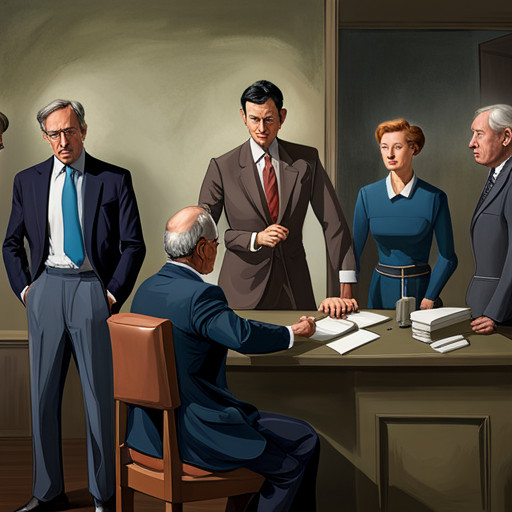
Counteracting opposition from the insurance company involves strategic note-taking during their presentations, as well as a thorough review and questioning of any documents they submit. It is crucial to remain objective while handling objections. It is also essential to maintain clarity and conciseness in addressing the opposing arguments.
Three key strategies include:
1. Examination of Documents: Scrutinizing all documents provided by the insurance company is vital. It enables detection of any inconsistencies or inaccuracies.
2. Strategic Questioning: This involves asking questions that challenge the insurance company's arguments. It can clarify ambiguities or expose weak points in their case.
3. Clear Rebuttals: When the insurance company presents opposing arguments, it is necessary to counter them effectively, using robust evidence and logical reasoning.
The Importance of Concluding Remarks
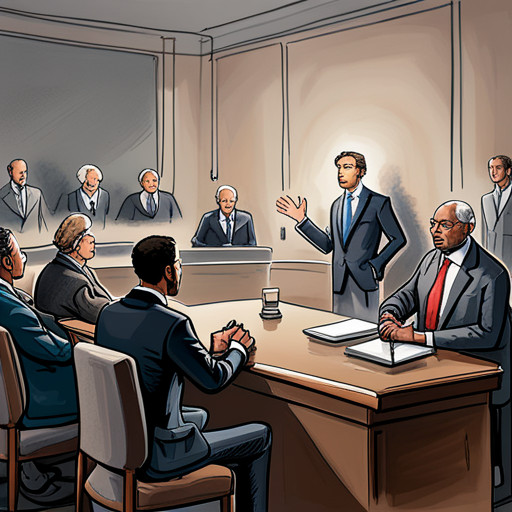
In the final stages of the dispute resolution process, concluding remarks play a pivotal role in summarizing the key points of the argument and emphasizing the evidence that counters the opposing party's claims.
The importance of concluding remarks cannot be overstated in the arbitration hearing. They serve as the final opportunity to underline the strength of the presented case, address opposing arguments, and leave a lasting impression on the arbitrator.
It is advisable to recapitulate the key points of evidence, reiterate the desired outcome, and tactfully counter any opposing arguments in a succinct manner. This helps in cementing the claimant's position and persuading the arbitrator in favor of a favorable decision.
Hence, strategic preparation and thoughtful delivery of concluding remarks are of utmost importance.
What Happens After the Arbitration Hearing

Following the conclusion of the arbitration process, several important steps typically occur, which may include the arbitrator's decision-making process, communication of the decision, and potential need for further actions based on the outcome.
1. Post Hearing Documentation: The arbitrator may request additional documents to finalize their decision. It is crucial that these requests are promptly and thoroughly addressed.
2. Decision-Making Process: The arbitrator reviews all the evidence presented during the hearing and in the post-hearing documentation, subsequently formulating a result that reflects their assessment of the claims.
3. Potential Outcomes: The arbitrator's decision could result in a variety of outcomes, including awarding damages or dismissing the claim. Understanding these potential outcomes can help parties manage expectations and plan for subsequent steps.
Key Takeaways From the Arbitration Process
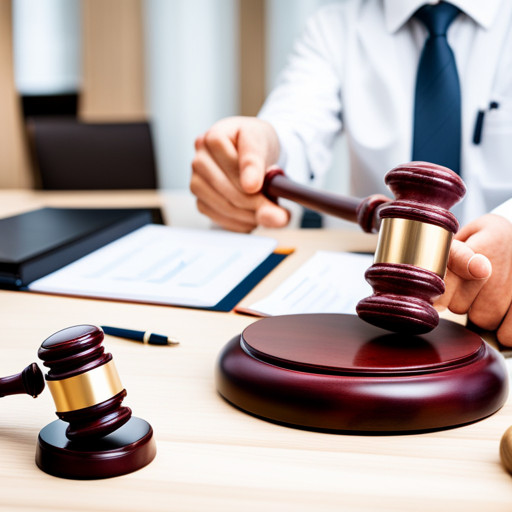
Significant lessons can be gleaned from the arbitration process, providing valuable insights for future dispute resolution endeavors. The benefits of arbitration are manifold, including cost and time efficiency, flexibility, and confidentiality.
The process places importance on thorough preparation, including the collection and organization of relevant evidence. It also necessitates a clear understanding of the rules of arbitration, with an emphasis on the less stringent regulations regarding evidence.
Strategies for effective presentation involve concise and focused opening statements, detailed exposition of the case facts, and adept handling of opposition.
The process of arbitration underscores the necessity for meticulous preparation, organized presentation of evidence, and proficient negotiation skills.
The insights derived from the arbitration process serve as a robust foundation for successful dispute resolution.
Frequently Asked Questions
What Happens if I Choose Not to Participate in the Arbitration Hearing for My Personal Injury Case?”
Non-participation in an arbitration hearing for a personal injury case can lead to significant consequences. The process may proceed in the claimant's absence, often resulting in an unfavorable outcome.
The arbitrator might interpret non-attendance as a lack of commitment to the case, potentially impacting their final decision. Therefore, understanding the implications of non-attendance in an arbitration hearing is crucial in personal injury cases.
This highlights the importance of active involvement in the arbitration process.
Can I Appeal the Decision if I Am Unsatisfied With the Outcome of the Arbitration Hearing?”
The appeal process following an arbitration hearing is typically limited. Arbitration decisions, often binding, are designed to provide a final resolution to disputes, reducing the potential for prolonged legal battles.
However, under specific circumstances such as arbitrator misconduct or gross error, an appeal may be possible. Satisfaction with the outcome depends on multiple factors including the strength of the case, the evidence presented, and the perceived fairness of the arbitration process.
What Is the Role of the Insurance Company’s Attorney During the Arbitration Hearing?”
In an arbitration hearing, the insurance company's attorney plays a critical role. Utilizing various strategies, they defend the insurer's position, challenge the claimant's assertions, and aim to minimize the potential compensation.
The attorney is obligated to present credible evidence, cross-examine the claimant and their witnesses, and make persuasive arguments to uphold the insurer's obligations.
Their strategic approach can significantly influence the arbitrator's decision, highlighting the importance of adequate preparation and representation for the claimant.
How Long Does It Typically Take to Receive the Arbitrator’s Decision After the Hearing?”
The timeline for an arbitrator's decision varies, often depending on the complexity of the case. Generally, the decision is provided within a period of 30 days following the hearing's conclusion. This is indicative of the arbitrator's authority to analyze presented evidence thoroughly, deliberate on the arguments, and render a resolution based on the merits of the case.
However, the stipulated timeframe may be extended under certain circumstances, such as request for additional documents.
Are There Any Costs Involved in the Arbitration Process for Personal Injury Cases?”
In personal injury cases, arbitration often involves certain costs. These can include arbitrator's fees, room rental for the hearing, and expenses for obtaining necessary documents or witness testimonies.
However, compared to traditional litigation, arbitration may offer cost advantages due to its streamlined process and shorter duration.
Furthermore, settlement negotiations prior to arbitration can potentially reduce these costs by reaching an agreeable resolution without proceeding to a full hearing.

This post has been generated by AI and was not reviewed by editors. This is Not legal advice. Please consult with an attorney.




